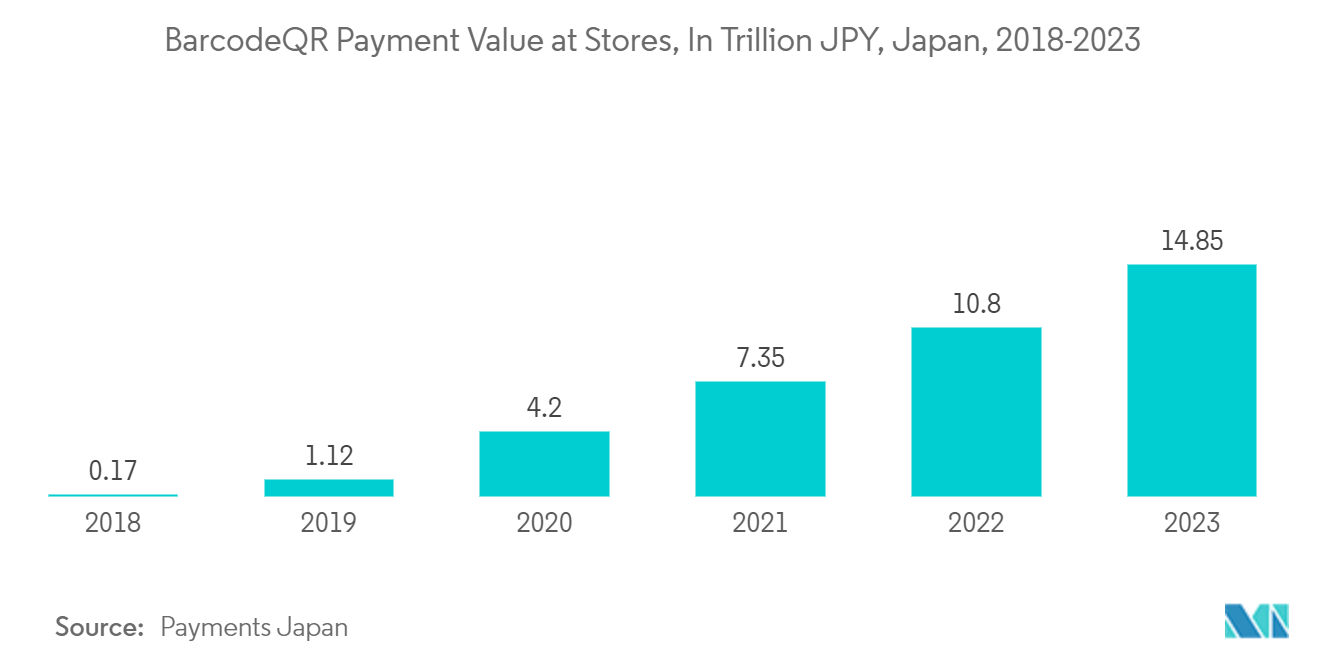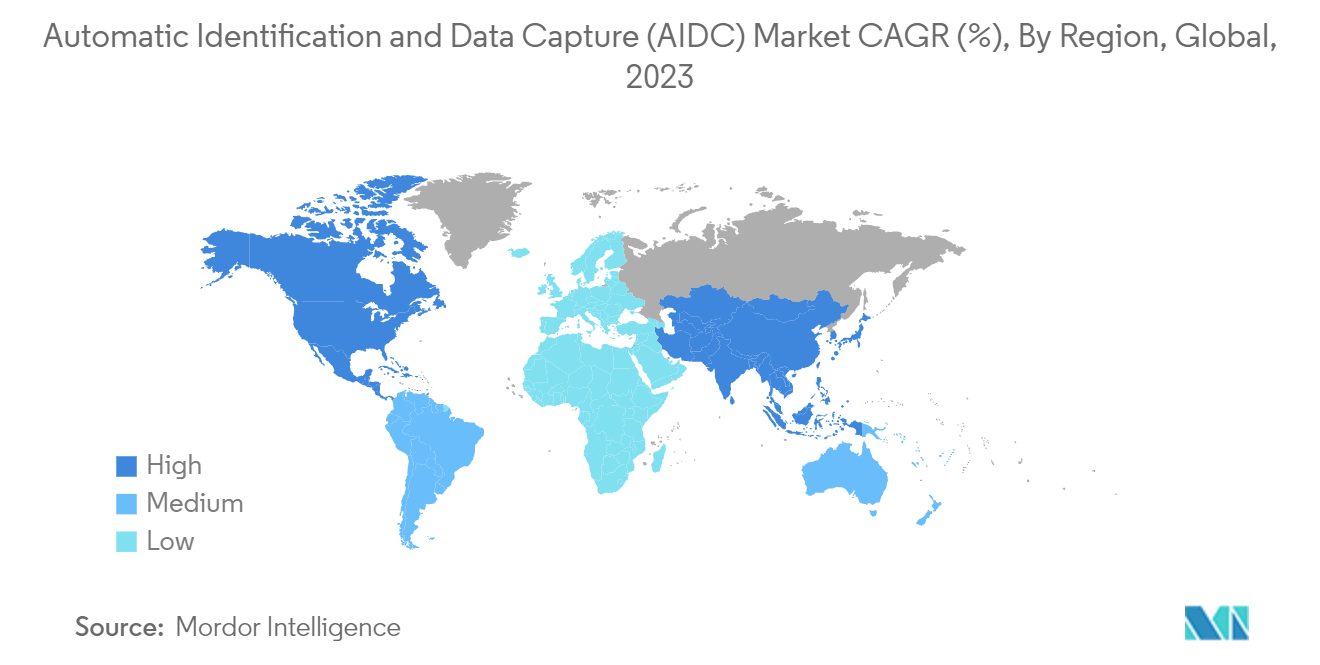Market Trends of Automatic Identification And Data Capture (AIDC) Industry
Barcodes Segment To Hold Significant Market Share
- Barcodes are one of the most widely recognized forms of AIDC technology. Barcodes are small images of lines and spaces that are attached to retail items, ID cards, and mail to distinguish a specific product number, person, or location. A barcode reader utilizes a laser beam to detect the thickness and variation of the lines and spaces. The reader then converts this information into digital data and transfers it to a computer for storage or further action. Moreover, the barcode reader utilizes a laser beam that is able to detect and interpret the thickness and variation of the lines and spaces.
- Barcodes play a critical role in enabling businesses to efficiently manage and access large amounts of data related to the products they are attached to. They are widely utilized in the healthcare industry, particularly in hospitals, to accurately identify patients and access important information such as medical history and medication allergies. In addition, barcodes are essential in various industries for documenting essential details, such as tracking rental cars, airline luggage, registered mail, and even hazardous materials like nuclear waste.
- Furthermore, the increasing popularity of cashless payments in Japan. The proportion of cashless transactions has shown growth, more than doubling in the past ten years. This surge can be attributed to the higher usage of credit cards, as well as the doubling in value of QR code and barcode payments from 2021 to 2023. According to Payments Japan, in 2023, the total value of QR code and barcode transactions at both physical and online stores in Japan reached approximately JPY 14.9 trillion (USD 94.22 billion). Barcode payment services have emerged as the second most preferred payment method, surpassing electronic money for the second consecutive year.
- Moreover, two-dimensional barcodes provide the capability to incorporate Web URLs, text, or other information in a format that can be read by a camera. This feature allows smartphone users to conveniently scan a 2D barcode and be directed to a corresponding Web page or other data contained within the code. As a result, users are relieved from the burden of having to remember or manually input URLs found on a product.
- Manufacturers are continuously improving advanced barcode scanners to enhance the adoption of their products. For example, Zebra's barcode scanners have been well-received in the market due to their advanced scanning capabilities, such as detecting damaged barcodes, and their durability in challenging work environments. Other manufacturers in the automatic identification and data capture (AIDC) market are following suit by implementing 24/7 ergonomics in their barcode scanners. Companies are prioritizing the integration of proprietary technologies in their scanners to stay ahead of the competition.

Asia-Pacific To Be The Fastest Growing Region
- The Asia-Pacific region has contributed significantly to the AIDC market. Retail and logistics companies are increasingly establishing a presence in the region to take advantage of the growing purchasing power of the middle class, which has, in turn, driven the growth of the automatic identification and data capture market in the area. Moreover, the notable presence of various market players like Toshiba, SATO, and other players in the region is expected to further boost the growth of the automatic identification and data capture market in APAC.
- The high share in the market can be credited to the growing awareness and widespread adoption of AIDC devices, as well as increased government legislative support and investments, especially in the retail, healthcare, and manufacturing sectors. The regional market is experiencing growth due to the widespread acceptance of advanced technology and technological advancements across various industries.
- The growth in the region is mainly attributed to the rising awareness and usage of AIDC devices, along with increased government support and investments, especially in the retail, healthcare, and manufacturing sectors. This growth is significantly contributing to the technological advancement of various industries in the area.
- The government's support and initiatives for the use of Radio Frequency Identification (RFID) technology in various industries, such as national ID cards and transportation, along with the increasing acceptance of RFID technology by private companies, have significantly contributed to the potential growth of the AIDC market.
- Moreover, according to Zebra Technologies reports, around 70% of warehouse decision-makers in India and the Asia-Pacific (APAC) region have expressed a desire to enhance efficiency through automation by 2024. Moreover, 58% of warehouse decision-makers are considering the implementation of radio frequency identification (RFID) technology by 2028. This decision is anticipated to improve inventory management and reduce occurrences of out-of-stock items. Such factors are likely to drive the growth of the market.


